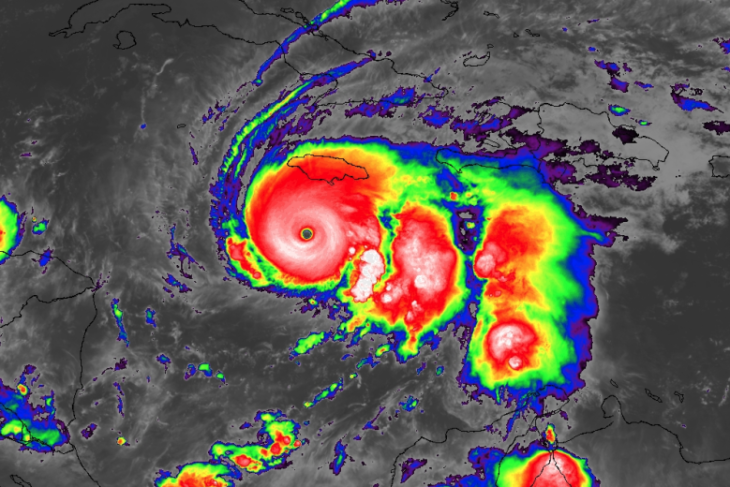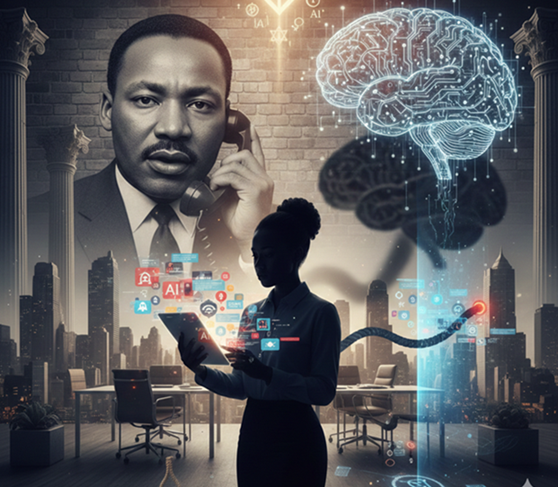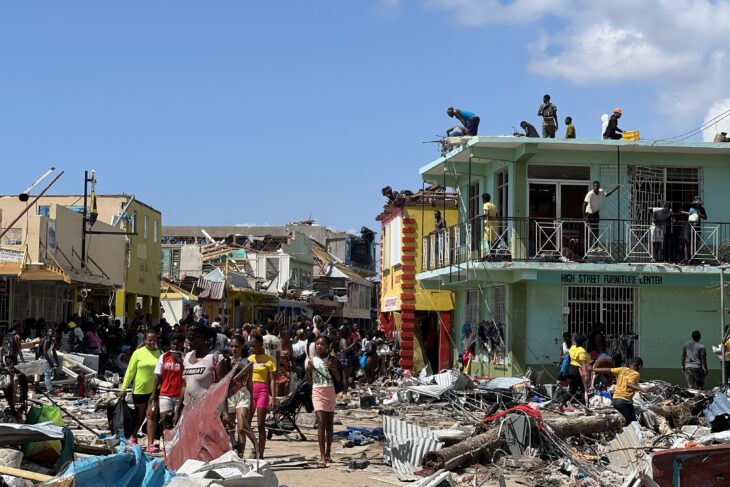
 In “Walk-Foot People Matter,” I called attention to the systematic mistreatment of citizen-pedestrians. Focusing on citizenship allowed me to emphasize that this is about the core democratic principle of fair treatment. Today, I suggest that, besides the significant economies and health benefits of walking, one of its important, but often overlooked, virtue is that it helps to nurture and sustain democratic values. On the sidewalks of our cities, we meet in some sense as equals. Conversely—in the absence of the routine, physicality, and immediacy of face-to-face pedestrian contact—interpersonal distinctions and social divisions are heightened.
In “Walk-Foot People Matter,” I called attention to the systematic mistreatment of citizen-pedestrians. Focusing on citizenship allowed me to emphasize that this is about the core democratic principle of fair treatment. Today, I suggest that, besides the significant economies and health benefits of walking, one of its important, but often overlooked, virtue is that it helps to nurture and sustain democratic values. On the sidewalks of our cities, we meet in some sense as equals. Conversely—in the absence of the routine, physicality, and immediacy of face-to-face pedestrian contact—interpersonal distinctions and social divisions are heightened.
Historically, other modes of transportation—horses, carriages, trains, automobiles, ocean liners, airplanes—have all allowed people to travel longer distances and do so more swiftly. Tellingly, they have also been given important symbolic value: have been used as ways of signaling and highlighting interpersonal and status distinctions. So to take a local historical example, enslaved persons were not generally allowed to ride horses in plantation Jamaica and were expected to carry permits issued by their masters when required to travel on horseback on the owner’s business. For their part, slaves and free black people delighted in riding horses and would do so in style.
We decide culturally as human beings what distinctions are important to us, and we make them meaningful through symbolic and everyday practices. Consider, for example, the division between Uptown and Downtown. In the imagination and in the talk of Kingstonians, they have become an inevitable fact of nature. Yet the Uptown/Downtown distinction is neither preordained nor inescapable. Rather, it is a trench we have dug together and are widening and deepening through our everyday actions and practices. In late-19th and early-20th century Kingston there was far greater social-spatial connection and exchange between people of different rank in everyday life and throughout the life-career. They lived in closer geographic proximity to each other and came into more regular contact for marketing, medical-care, church worship and the burial of loved ones than they do nowadays.
Starting around the 1920s and gaining momentum in later decades, we built or extended a parallel set of social services and facilities such as hospitals, “preparatory” and secondary schools, retail outlets, security services, churches, nursing homes, funeral homes, and cemeteries to cater to the needs of Kingston’s more affluent groups both living and dead. In doing so I wonder, for instance, could these investments have been more productively channeled? It would be instructive to have an economic historian look into studying just what the cost for us as a society has been of creating and maintaining this duplicative, two-tiered institutional structure—cradle to grave—in the context of limited resources. My concern in this series of articles, however, is less with the economic cost of the dual social order we have so elaborately designed, and more to suggest that there have been scarcely recognized social costs accompanying the construction of these parallel worlds.
The justification one often hears for the move to the more distant suburbs and for the many strategies of fortification we have collectively and so vigorously pursued over the past six decades—encasing windows, doors and verandahs in metal grills, constructing formidable peripheral walls and electronic entry gates, moving into entirely gated communities, and more—is that these measures offer protection against crime. But if we can set aside our deep-seated fears for a moment, it might equally well be argued that the retreat of the city’s middle and upper classes served to precipitate and to deepen the physical decline of downtown and nearby neighborhoods and to make entire areas of the city more susceptible to crime and violence. To defeat violence we have to reclaim the public square constantly and in full force, preferably on foot, not withdraw ourselves from it. People who live Downtown, instinctively know this and come out in their numbers to take back the streets as soon as possible after episodes of violence die down.
One effect of our newly fortified suburban living spaces, and increasing automobile dependency is that they have altered our mode of relating to each other over the course of the very decades in which we have supposedly been attempting to establish deeper, more democratic forms of governance. We became self-governing merely it seems to apply ourselves methodically and with greater zeal to finding new ways to heighten the interpersonal and social distinctions between us.
Walking Kingston
Walking and taking shared public transportation—renewing commonplace habits abandoned only a generation ago—may be one simple way we can begin to bridge the city’s deep social divisions, allowing us to reconnect with each other and with some of Kingston’s simple delights. Up until the late 1940s and early 1950s most Kingstonians routinely walked, rode bicycles and took public transportation. They walked to work, to visit each other, do their shopping, and access the recreational and entertainment venues of the day.
Great cities lend themselves to walking and are best experienced on foot. In the first of this series of articles I described some of the everyday enchantments of living in Kingston, pleasures most fully explored and experienced by walking. Indeed, with its gently sloping terrain, spectacular mountain vistas, and the cooling effect of the prevailing trade winds, Kingston is ideally suited to walking and cycling and the city developed over the generations strong social and literary traditions around the pedestrian habits of its residents.
In a magnificent essay, “Walking While Black,” Jamaican-born writer, Garnette Cadogan, freshly describes the liberating pleasures (and the perils) of walking the city; comparing and contrasting his experiences over several decades walking Kingston, New Orleans, and New York. Returning to Kingston following an eight-year absence, he finds himself able to shed momentarily some of the circumspection he had perforce developed in New Orleans. Rediscovering the rewards of walking Kingston, Cadogan elegantly remarks: “Walking had returned to me a greater set of possibilities…I strolled into my better self, I said, along with Kierkegaard, ‘I have walked myself into my best thoughts.’”
For the past few months I have moved about the city on foot, walking and taking public transportation for most of my routine activities. To get an idea of how manageable this is, now and then I timed my walks. With this data and the aid of Google maps, here are a few sample walking times between selected destination points around the city. One can walk from Half Way Tree to New Kingston in a little over 20 minutes, to Liguanea in 41 minutes, or to Cross Roads in half an hour. From Antrim Crescent in Vineyard Town to Barry St. is an easy 43-minute walk; from sections of Cherry Gardens to Barbican Square takes a mere half hour, and a stroll from Millsborough Crescent to Sovereign Centre can take 24 minutes. Nowadays we may spend far more time sitting in our cars with traffic in lockdown mode, trying to travel between such places.
It may be tempting to explain away our fixation with cars as status symbols by claiming that because Busha and Massa rode or traveled by carriage and our slave forebears were forbidden and punished for doing so, we must now be living out the fulfillment of those prohibited aspirations. But this explanation conveniently erases memories of several intermediate generations of middle class and aspiring middle class Kingstonians who happily walked and rode bicycles. Historically developed values, practices and patterns of thought, or what anthropologists call “culture,” is too often invoked as a way of selectively justifying one set of ideas and practices over others and endowing them with a certain inevitability.
Walking the city allows for more direct interpersonal interactions, the exchange of greetings, and casual conversation: even complete strangers can engage each other as equals. Walking makes for easier, more spontaneous and deliberate pauses; engages more fully all of the senses—the lingering smells of ripe mangoes, or baking bread, the tactile pleasures of the southwesterly afternoon sea breeze, the delight of birdsong. By connecting us to the lives and stories of others, walking can seed in us our own stories. As a teenager in the 1960s and 70s my aunt Alice who taught the piano, would come to have lunch with us every Saturday and spend the afternoon. Until well into her 70s she took the bus to the different studios where she taught and over lunch would regale us with stories of some of the happenings on her commutes: the first time, for example, she was addressed as “Granny” by a conductor. Waiting with strangers at a bus stop recently, I became enraptured by the tale of a fellow traveler which evoked from another woman at the bus stop a sympathetic and brilliantly apt response in the form of a proverb I had never heard: “A no wan day monkey waan wife!” Now, that proverb and its significance have become firmly implanted in my imagination.
Leaving the opening of the National Gallery’s Digital exhibition one Sunday afternoon not long ago, there seemed to be very few patrons who hadn’t traveled to the event by car. But as I walked up Orange Street, I was happy to catch up with one professional couple that had attended the opening and, like me, were walking to catch a bus at North Parade. By sheer coincidence, we were bound for the same bus and so were able to have a wonderful, extended conversation about contemporary United States politics, the question of race, and more. They were heading to Devon House, on a date for the afternoon I imagine, and had chosen that day not to drive their cars. By not driving, we were able to experience differently some of the pleasures of the city and to have a warm encounter we otherwise would never have had.
Reference Cited
Cadogan, Garnette. 2016. “Walking While Black.” Literary Hub, July 8, 2016, http://lithub.com/walking-while-black/ Nickell Robey-Coleman Jersey




Greeting Dr. Carnegie,
Thank you again for another thought-provoking and insightful examination of Jamaica’s dwindling, yet still vibrant walking culture. Your historical examinations and contemporary meanderings and promenades through Kingston give us encouragement and impetus to leave our cars at home and engage the city on foot.
A nice, thought-provoking nudge towards recapturing what was once a friendly, pleasant city.
One Love Still!